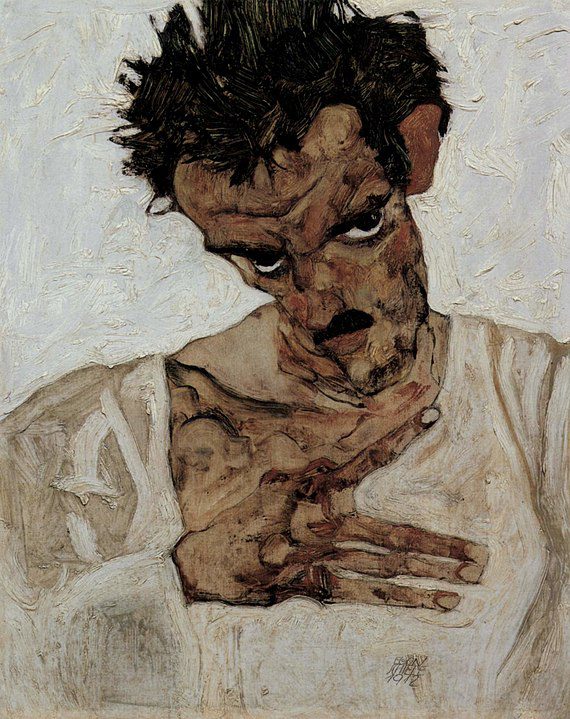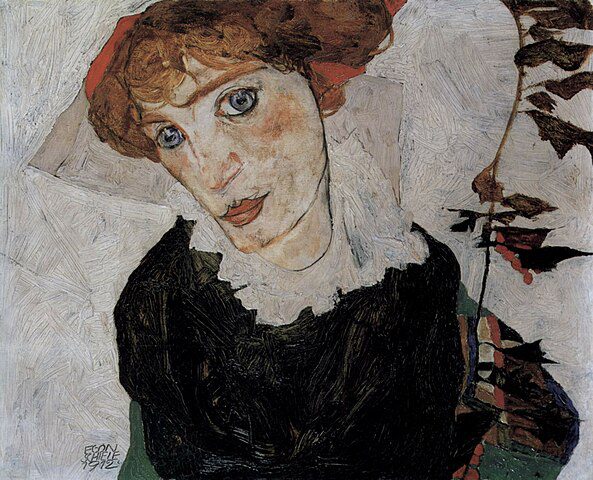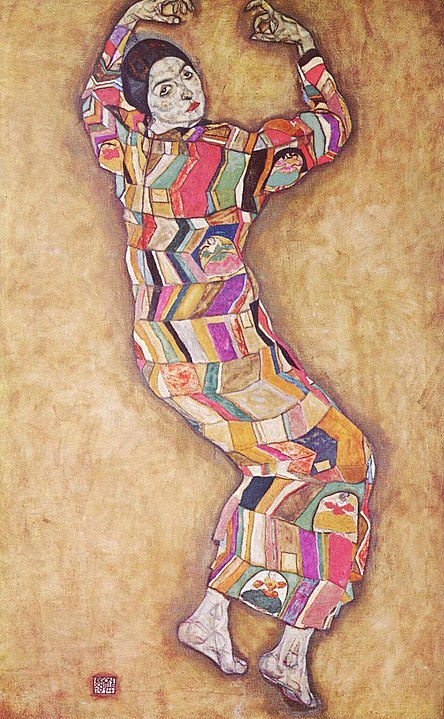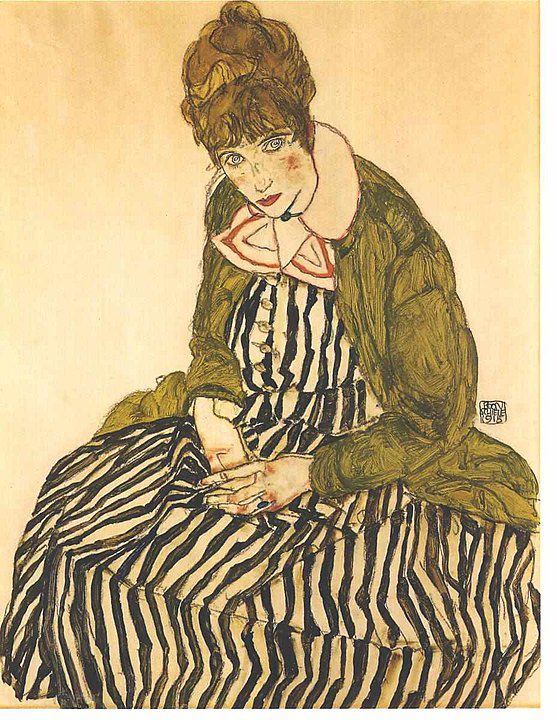
Egon Schiele (1890–1918) was an Austrian painter and a protégé of Gustav Klimt, known for his intense and raw portrayal of the human form. Schiele’s work is marked by its stark linearity and bold use of color, pushing the boundaries of early 20th-century art with his expressionistic and often provocative depictions of sexuality and existential despair. His contribution to the expressionist movement has cemented his legacy as one of the most significant and controversial artists of his time.
Born in Tulln, Austria, Schiele showed an early interest in art, leading to his attendance at the Vienna Academy of Fine Arts at the age of sixteen. It was here that he began to develop his distinctive style, influenced by the Secessionist movement and his mentor, Gustav Klimt. Klimt’s influence on Schiele was profound, guiding him towards a focus on the human body and eroticism in his work. However, Schiele quickly diverged from Klimt’s decorative sensibilities, opting instead for a more direct and unflinching approach to his subjects.

Schiele’s artistic career was characterized by an intense exploration of the human condition, reflected in his depictions of nudes, self-portraits, and landscapes. His figures, often contorted and explicit, challenge traditional notions of beauty and propriety, delving into themes of mortality, sexuality, and the depths of human psychology. Schiele’s self-portraits, a significant portion of his oeuvre, reveal a deep introspection and an ongoing examination of his identity and emotional states.

The raw emotional intensity and bold eroticism of Schiele’s work often led to controversy, most notably resulting in his arrest and imprisonment in 1912 for charges related to the dissemination of immoral drawings. Despite—or perhaps because of—this controversy, Schiele’s work continued to evolve, and his later pieces displayed a maturation in style and subject matter, including more landscapes and cityscapes, characterized by the same expressive lines and vibrant colors found in his figural work.
Schiele’s career was tragically short-lived; he died in 1918 at the age of 28 during the Spanish flu pandemic, just as he was gaining significant recognition for his work. Despite the brevity of his life, Schiele’s influence on the art world was profound. His exploration of expressionism paved the way for future artists, influencing subsequent generations and movements that sought to convey emotional and psychological depth in their work.

Schiele’s legacy is marked by his ability to convey the intensity of the human experience through his art. His work challenges viewers to confront uncomfortable truths about desire, mortality, and the human psyche, making him a pivotal figure in modern art. Today, Schiele is celebrated for his unique contribution to expressionism and his fearless exploration of the human form. His paintings and drawings, once the subject of controversy, are now recognized for their groundbreaking approach to expression and form, securing his place as a seminal figure in the history of art.




